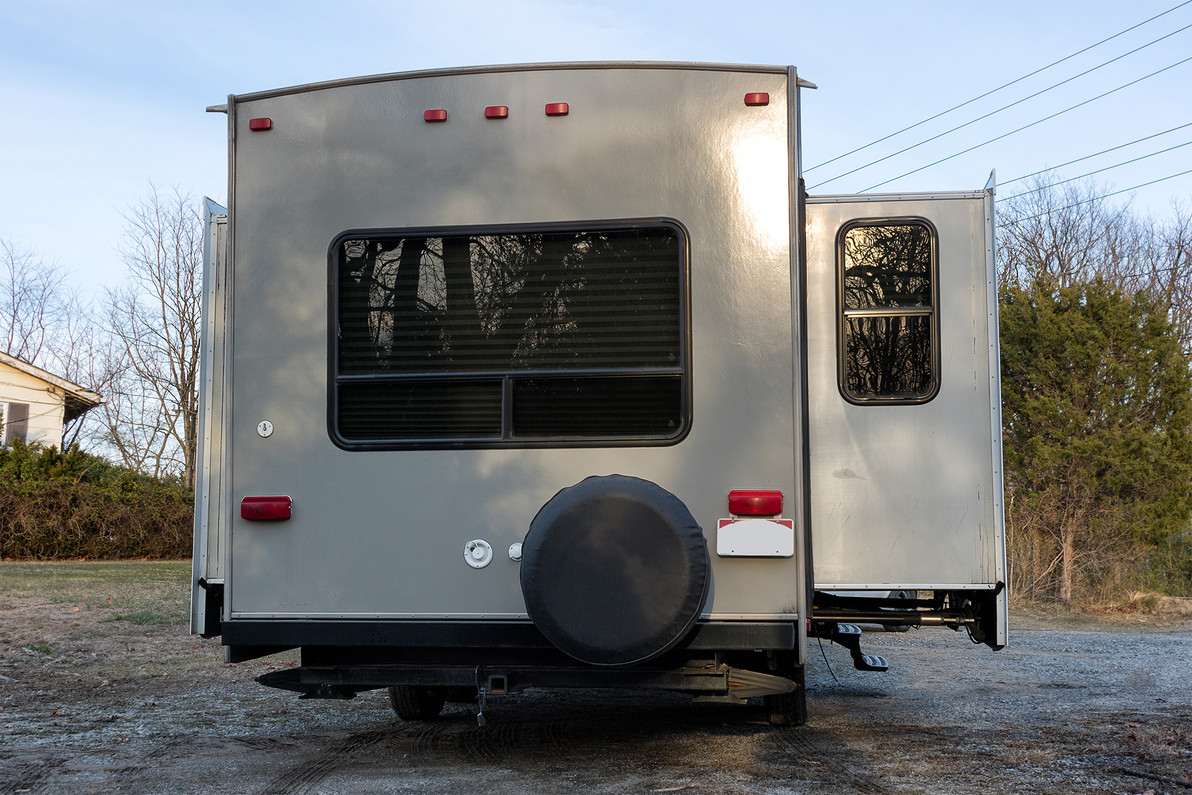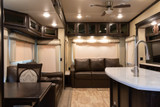The Basics of Slide Outs
Slideouts are great. They add space, storage, and extra area for relaxation. But when you look past the shiny benefits, you’ll realize that there is much more to having a slideout in your RV than just opening and closing it. You have to think about how to keep your slide mechanisms, slides, and roof maintained as well as what to do if the slide starts to have problems. To help you with this, we’ve gathered some basic information regarding your slide out as well as how to maintain it.
Now, there are three main types of slides in the RV world. You’ve got your tip out slides, which are mostly used on older RVs and which manually tips the slide. Next is the electric slide. These kinds of RV slideout systems use an electric motor to push the slide out and to pull the slide back in. These are generally used with smaller, lighter slide outs and are very effective as long as they are not overloaded. Finally, the hydraulic slide system uses a hydraulic pump to work the slide. Generally, this type of slideout system is used on larger motorhomes, as it can push multiple slide-out sections at once. This kind of system is more complex than an electric slide system, however, and needs more maintenance.
RV Slide Out Maintenance
Speaking of maintenance, the three big areas that need to be checked out and maintained on your slide out are the seals, the roof, and the internal mechanisms. While this process may be a bit of a nuisance, it’s important to keep your slide in good condition if you want to be able to use it for many years to come. While you can definitely check up on it each time you camp, the minimum number of times you should check them is twice a year. By ignoring problems that might come up, these problems can snowball into much worse issues.
The first place that needs to be checked is the RV slideout seals. These seals protect your slide from dirt, debris, insects, water, and more, keeping your RV clean and controlled. Maintaining these means checking them for signs of wear, cleaning them, replacing them if they’re cracked or damaged, and lubricating them. Most professionals recommend using a dry lubricant, which helps your slide work smoothly. Once you do use the lubricant on the slide, wait for a few minutes before moving the slide again. The second place that needs to be checked is the roof. On many slide-out roofs, there is a slide out awning. This works similarly to a normal awning, in that it keeps the rain, dirt, sticks, and other things away from the slide-out roof itself, keeping it clean and protected. And just like your normal awning, keeping this in good condition means cleaning it off before packing it away to travel as well as not keeping it out over storage seasons. If you don’t keep it clean, then the dirt and debris that’s on the slide-out awning could get into the track and cause even more problems. When you clean it, you should also check to make sure there aren’t any tears or patches in it. If you do find anything wrong with it, it should be fixed immediately so that it doesn’t get worse. Finally, the mechanical parts should be checked. While most of this work is best left to professionals, you should still try and pay attention to how the parts are working. If you open up your slide-out only to hear some bad noises coming from it, stop and take it to a repair shop. If you are trying to shut the slide-out and it doesn’t work like normal, stop to make sure there is nothing blocking it from closing, whether inside or outside, and try again slowly. If it still sounds weird, take it to a repair shop. Just make sure that it’s closed all the way before heading out on the road. For the most part, most RV maintenance is preventative maintenance. If you keep everything working nicely, then you won’t have to worry about things breaking in the future.
As with all things RV, there’s much more to using and taking care of your slide out than can be covered simply. To help you with those other times, there are a few more tips we can share. First, never leave your slide-out open when you store it. This can damage the slide-out awning, mechanisms, seals, and even more. Just don’t do it. Next, always level your RV before extending the slide outs. Extending the slides before leveling the RV means extra strain on both the slide and the leveling system. If you want to keep both systems working well for longer, then wait until you’re leveled before opening up the slide. Finally, don’t use an RV slide stabilizer unless your slide is sagging. Using one when it’s not needed can actually damage the slide and is often not worth the risk.
Owning an RV is definitely more than just driving it to a location and parking it. There is work that goes into it and this extends to the RV slide out. Whether you’re just getting started RVing or have been traveling the roads for years, taking care of your RV is the first step towards having an amazing RV experience.
Recent Posts
-
How To Keep RV Furniture From Peeling
Peeling RV Furniture | Why it Peels and How to Stop it Your RV furniture is a point of pride on …Apr 23rd 2024 -
4 Tips for Securing RV Furniture While Traveling | RecPro
How To Secure RV Furniture There are few things that beat going out on an adventure with an RV …Apr 11th 2024 -
Can You Put Regular Furniture in an RV?
Can you put regular furniture in an RV? Many new and old RV owners ask themselves this qu …Apr 8th 2024 -
Are RV Electric Fireplaces Safe
Being Safe in Your RV with an Electric Fireplace Safety is always going to be one of your highest …Apr 4th 2024 -
How To Install An RV Fireplace
A Warm Addition to Your On-Wheels: The DIY RV Fireplace Installation Guide Many RV enthusiasts ask …Apr 1st 2024 -
Essential Grilling Gear Every RVer Needs
Whether or not you consider yourself a pitmaster or grillmaster, if you’re out on the road with y …Mar 18th 2024







